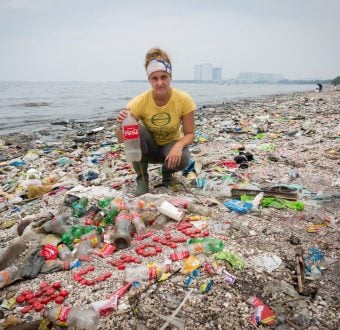Following a damning “60 Minutes” story on the vulnerability of
the nation’s chemical plants to terrorist attack, Greenpeace
provided the White House today with a list of facilities that
reported risks to populations of one million or more. This list
accompanied a letter to President Bush, charging his administration
with two years of neglect on this crucial homeland security issue.
Greenpeace also called for a series of measures to diminish and
eliminate these threats. The global environmental organization
provided key data to “60 Minutes” for its story.
“The foot-dragging by an administration that claims Homeland
Security as its number one priority is shocking. Almost nothing has
been done to protect the nation from terrorists who could turn
chemical plants and rail cars into weapons of mass destruction,”
said Rick Hind, Toxics Campaign Legislative Director for
Greenpeace. “The White House has only supported minor voluntary
initiatives proposed by the chemical industry itself. Chemical
safety should not be optional.”
Using publicly available data from the Environmental Protection
Agency (EPA), Greenpeace identified 112 facilities in 25 states,
with the top 20 threatening between 2.8 and 12 million people. More
than two-thirds of these facilities store or use chlorine. The 25
states are: Arizona, California, Colorado, Delaware, Florida,
Illinois, Indiana, Louisiana, Maryland, Massachusetts, Michigan,
Minnesota, Nevada, New Hampshire, New Jersey, New York, Ohio,
Oregon, Pennsylvania, Rhode Island, Tennessee, Texas, Utah,
Washington, and Wisconsin.
In its letter, Greenpeace urged the President to take action on
three fronts: issue new regulations to encourage plant design
changes and conversion to safer technologies, support meaningful
legislation(S.
157) to prevent chemical disasters, and prohibit the transport
of hazardous chemicals through highly populated areas such as
Washington, D.C.
Terrorism experts from agencies such as the EPA, the Department
of Justice, the General Accounting Office and the FBI have
thoroughly documented the nation’s vulnerability to toxic releases
at U.S. chemical plants. This vulnerability is not limited to an
intentional terrorist attack. Lax business practices or an accident
could result in a deadly release similar to that experienced in
Bhopal, India in 1984, when a gas leak at a pesticide plant killed
8,000 within three days.
“The answer isn’t merely higher fences or more security guards,”
said Hind. “Safer substitutes exist for chlorine, ammonia, hydrogen
fluoride and other ultra-hazardous chemicals. We can and should
neutralize this threat by eliminating the unnecessary use of highly
toxic substances, beginning with those that threaten the largest
numbers of people first.”
Click here to
read the letter Greenpeace sent to Bush.

